Text
The significance of the Hermès Barthes scarf.
[I wanted to make a more typical comedic post about this since I heard about the scarf in October, but actually found the scarf interesting enough to approach with some seriousness, and blogging easier to approach when it was a procrastinatory tool for not doing my PhD writing, and when prompted by a fellow culutre-minded academic who is a long-time friend of the blog to get back into it.]
Roland Barthes, French Strucutralist and later post-Structuralist philosopher and critical theorist, had some ideas about fashion. He wrote a book of them. In addition, he was a stylish dresser who wore scarves, and clothes in general, well.
In October, Hermès launched a limited edition Roland Barthes scarf to commemorate the centennary of his birth (895 Euros RSP).
Barthes had a pretty dim view of the fashion industry and its shifting styles driving consumption well before clothes would wear out their practical use. So while people have been asking, "what would Barthes think of his tribute scarf?" since then, it's probably not that much of a mystery. It's a crass bit of commercialization, sure, in a system of advertising and attributing significance to objects that they don't really have as a way to sell them and promote certain kinds of culture in the ways that Barthes' Mythologies covers in incredible depth. That said, it doesn't preclude cleverness in the scarf's design in the slightest, which I think Barthes would acknowledge while being leery of the whole object, to say nothing of it being inspired by his book, Fragments: A Lover's Discourse's page layouts:
If you look at the pattern, one of the first things that you might expect to happen would be that the scarf, when wrapped around the neck, might create pattern clash in the way that, say, striped neckties do in certain unorthodox knots like the Cape Knot:
With a striped tie, the outer parts of the knot would create clashing angles and the knot would look absolutely awful. The Cape Knot works well with solids, and, oddly enough, paisleys.
Here's the Barthes scarf, which actually has a nice pattern flow to it when wrapped because of its perpendicular lines, which is not a common pattern for a striped tie, but is common in checkered ties and scarves. As a result, the pattern gently cascades, rather than having its lines set against eachother, so it looks considerably better wrapped than one might initially expect.
What I think the scarf lacks is an arresting feature, what Barthes would term a punctum in a photograph; that eye-catching detail that brings the image together in a way that draws the viewer into a moment of Brechtian reflection.
At the time of his active writing, who else but Barthes would reflect on something as ordinary as a scarf? Why shouldn't the tribute seek to engender the same?
2 notes
·
View notes
Photo
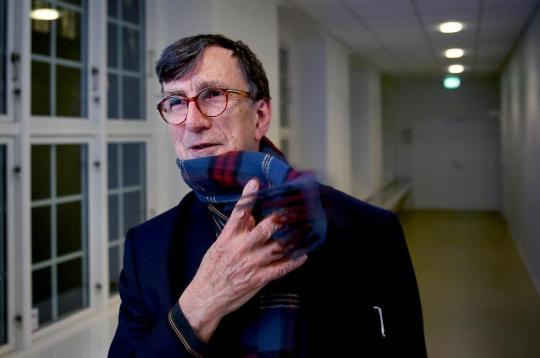
Bruno Latour's fashion can be likened to a black box. Each component of this, and every outfit, depends on a complex network of associations and factors in order to be experienced fully as the thing that it is. As it happens, this one associates to stylishness.
The scarf, dynamic in motion in this photo, is dynamic in matching bursts of colour. The red matches the spectacles, without which Latour would not be able to see his outfit in all its majesty, or the people who would acknowledge it. The gold matches his jacket's trim. Every piece is connected, an actor, whether subject or object, in the fundamentally important networks of fashion and style that pervade everyday life.
43 notes
·
View notes
Text
(META) A belated correction
One ought not rely too heavily on Google Image searches in doing this sort of thing. A new Swedish reader informs me, rightly, that the Kierkegaard/Twilight/Vampire Cape post from some months back actually used an image of Swedish playwright August Strindberg (Miss Julie being his most famous play that I'm aware of) and not Kierkegaard. It's been a while, but I don't think I attributed the image incorrectly on purpose to force the Kierkegaard's Journals/Twilight paraphrase joke. (Forced jokes aren't funny.)
That's a bit embarrassing, but, as fashionable academics might say, sometimes it's good to have a bit of peer review. I'll definitely be more careful about making sure the images are of who I say they are of in future posts, which I hope will be at a more regular rate than they have been lately.
Apologies for the error, which was a faux-pas akin to wearing white after Labour Day, or like using a simile for no reason.
-The Sartretorialst
1 note
·
View note
Text
The Badiou Sweater Event and its Revolutionary Consequence
Alain Badiou's sweater represents an immanent break from the dominant situation of fashion; a fashion event. The short cuffs and stripe pattern compel us to ask ourselves; "after witnessing this sweater, part of the domain of art in which events can unfold and clearly have, can we continue to live and dress in the ways that preceded it?"
What Truth does this sweater-event contain, for us to engage in a process of militant fidelity to? Does this sweater shift the ground of our ethics, our understanding of the situation we are in?
The sleeves seem too short, though that may be an effect of the style of cuff. As a representative statement, the four colours and the stripe pattern represent Badiou's four domains of evental intervention; the spheres of art, science, politics, and love. As a fashion statement, it is out of step with what one might expect of Badiou's militantly Maoist sensibilities. Though it may suit him, one might have good reason to wonder about the universality of such a sweater.
The militant adherents to evental Truths are often ahead of their time, standard-bearers of a new order to replace the old. The prevalence of similar sweaters in the crowd, striped or otherwise, give cause to wonder about the Badiou sweater-event and its revolutionary potential. To which sub-set of sweater does his belong? The truly revolutionary, or merely the steeped in hipster irony?
20 notes
·
View notes
Photo
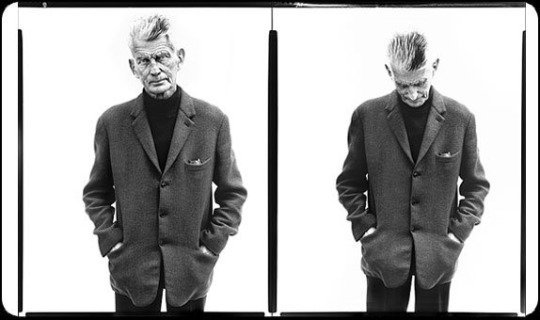
Samuel Beckett wouldn't need to dream of fair to middling women in this dapper, if risky, get-up. He wouldn't have to wait eternally for the hotties either.
Stark and minimal, just like his plays, this black/dark grey two-tone outfit is muted. You'd normally expect a flash of colour or brightness to offset that, which actually comes from his hair more than anything. His pocket square, while seemingly coloured, barely shows. Beckett's clothing is stylish, while restrained like actors in Endgame, encased in man-sized urns.
7 notes
·
View notes
Photo
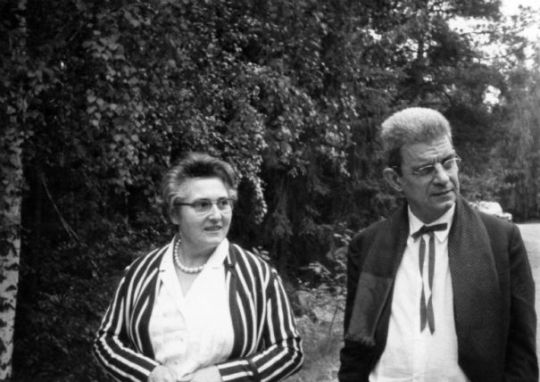
Jacques Lacan might have benefitted from spending more time in the mirror stage when preparing this particular ensemble. The ill-fitting shirt (note how it splays out toward the bottom) is a poor choice, but the combination of a colonel necktie and a casual fleecy jacket, while full of postmodern jouissance, clash like the superego and id.
33 notes
·
View notes
Photo
And now a fashion-without-philosophy post.
As a somewhat style-conscious guy and fan of orange as an accent colour, I'm all for this.
bespokenn:
Rust toned orange is a very underrated colour in menswear. Given our propensity for wearing whites, navys and greys, I believe that sartorially conscious men everywhere could benefit from having a few more orange toned accessories to complement the other pieces of his arsenal.
Unlike pink or red, which can sometimes be too bold, a muted orange is both sharp and restrained at the same time. The Azabu tailor display shown above is a good demonstration of this: mixing a rust coloured tie with an orange bordered linen pocket square on a jacket with various orange accents.
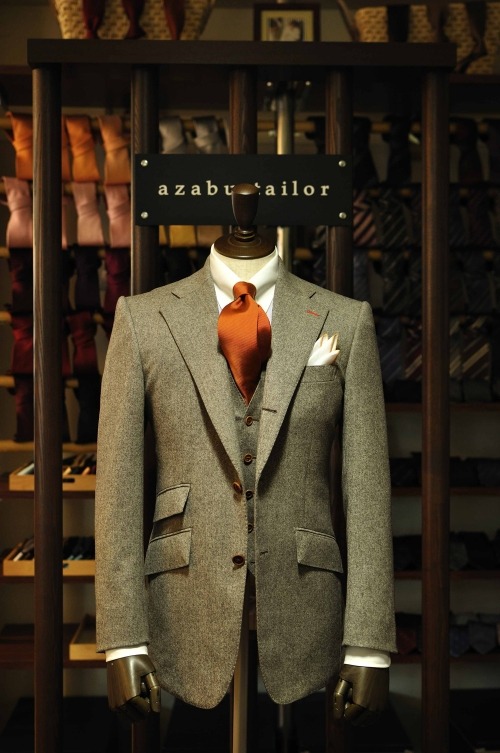
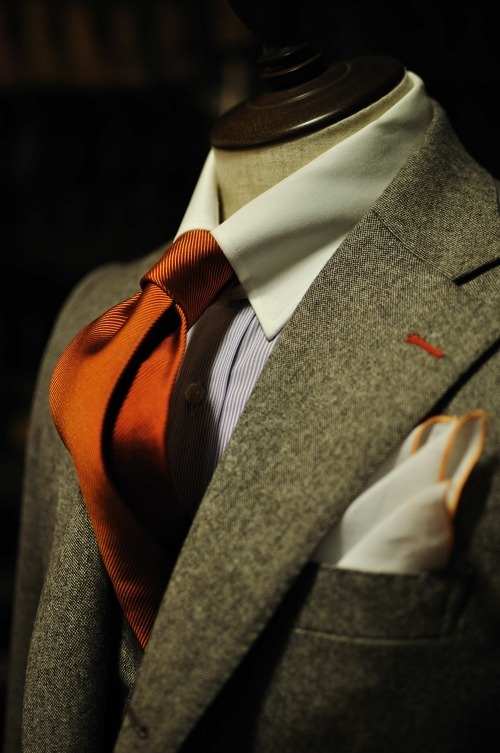
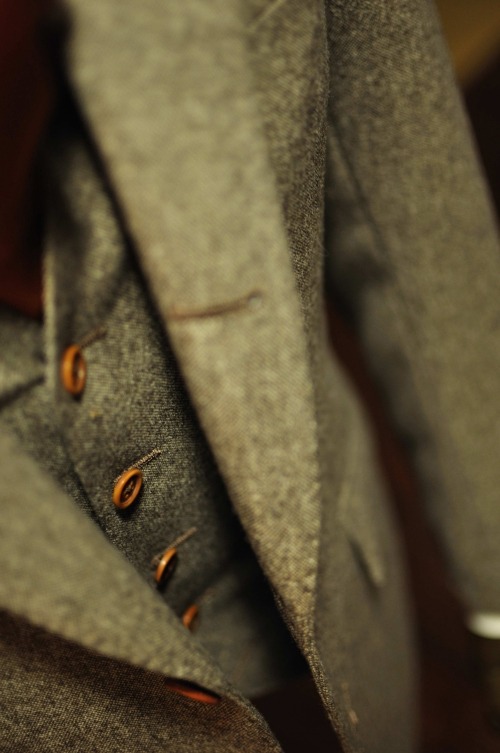

8K notes
·
View notes
Photo

A leaked message from Martin Heidegger Pty Ltd Online Customer Care:*
Like his fashion selections, Martin Heidegger's ideas are very, very carefully selected to ensure that they do not appeal to a broad customer base. This is something always at the forefront of his mind when undertaking philosophy. The reason for this is to ensure that he only advances ideas which appeal to a very philosophy-forward consumer-as-Dasein. This by default means that the consumer-as-Dasein whom is acclimated to drawing ideas from "philosophy-for-the-masses" type philosophers, is almost frightened by his range. Sometimes, we have found that this type of customer-as-Dasein almost finds his notions of "thrown projection" funny, and on occasion noted comments such as "it is as valid as Luce Irigaray's notion that the rigid structure of the male phallic-mind is the reason that we lack fundamental insight into fluid mechanics".** When we receive comments like this, we like to give ourselves and our intellectual cohorts, a big pat on the back, because we know we are doing our job right, and out modus operandi is being upheld.
Our range of ideas is held by A-list intellectuals such as Jacques Derrida, Slavoj Zizek and Glenn Beck, to name a few. Now, as one might appreciate, the intellectual counsel for these types of intellectuals is not to pick "run-of-the-mill" type arguments, and they do so on the basis to ensure that the arguments are cutting edge, and only propounded by a select few. Similarly, these ideas are designed such that they remain undesirable to the marginalized.
Insofar as our philosophical method goes; Similar to our intellectual offerings, our philosophical cabal is selected with a similar approach. Martin, whom served you, is a qualified philosopher whom has a sixth sense for the true condition of Being-in-the-World, and Martin's only problem is that he is too good at what he does, and as I am sure you are aware, people whom are talented, generally do not tolerate having their time wasted by members of an inferior race, which is the reason you were provoked to leave the seminar.
Whilst I concede that you work in philosophical enterprise, unfortunately that does not make us like for like. It is probably fair to assume, a lot of what I have said in this exegesis, either does not make sense to you, or you totally disagree with it all, which is what I would expect (unless of course I have you totally wrong - which I doubt). Let me guess, you would never, ever hire Martin in the course of your duty, would you? This is the very reason why your comment "from one philosopher to another" is so disproportionate. It's almost as though we are in totally different industries. Martin is a philosophical superstar, who possesses unparalleled ability that is both suhandenzein and vorhandensein, and I am sorry you felt upset by him, but he knew you were not going to embrace his ideas before you were thrown into a universe whose meaning is locked behind ever-spiralling hermeneutic circles.
So if you would like to do us any favours, please do not waste our intellectual staff's time, because as you have already seen, they will not tolerate it. I am sure there are plenty of philosophers (eg. Hume) that appease your taste, so I respectfully ask that you side step our works during future existential expeditions.
Thank you for your enquiry,
<name redacted>
Martin Heidegger Pty Ltd Online Customer Care
* Reference, See: http://dl.dropbox.com/u/6826302/Response.png
** Yes, this is a real argument that was really made. Last I checked, women haven't solved the Napier-Stokes equations either, but maybe someday!
#Dasein#Existentialism#GASP#Martin heidegger#current events#customer service#fashion#heidegger#parody#philosophy#suhandenzein#vorhandenzein#hermeneutics#style
21 notes
·
View notes
Photo
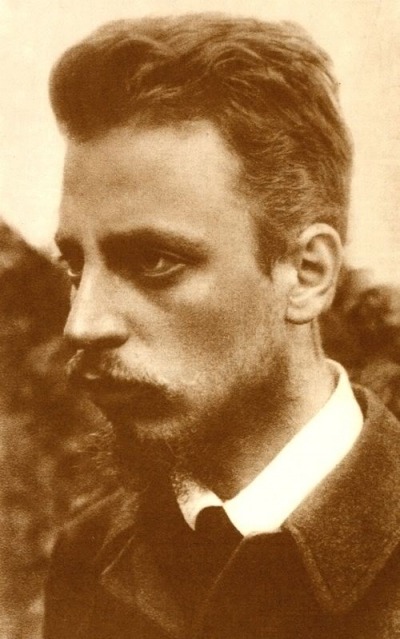
Rainer Maria Rilke pioneered many things: existentialist themes in German-language poetry, psychoanalytic undertones in poetry (he studied under Freud), being a man with a feminine middle name, and hipstamatic sepia photos.
While Rilke is mainly known as an elegiac poet, his fashion choices and the photographic composition here deserve odes. The three-quarter profile pose highlights Rilke's angular face, which plays well with the lines of the overcoat. The scraggly beard adds contrast to the simple linearity of the outfit. The widely spaced collar/lapels give a well composed look at the shirt and tie beneath. It gives a consistent appearance of intensity and deliberateness, in line with his craft.
30 notes
·
View notes
Photo

Notes from Underground Style:
Fyodor Dostoevsky's appearance, mainly his majestic beard, resembles both the title character of his novel, The Idiot, as well as Nietzsche's prophet who exclaimed that God was dead. It comes before its time to a world that was neither ready nor justified in acknowledging the difficult truths it poses.
Also, his coat is worn a bit loosely, just like the moral tendencies of the Brothers Karamazov.
#beard#dostoevsky#existentialism#fashion#literature#notes from underground#russian#the brothers karamazov#the idiot#fyodor dostoevsky#russian lit
4 notes
·
View notes
Photo
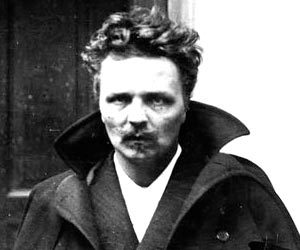
Søren Kierkegaard takes a vintage retro approach to this season's Twilight-inspired couture. A die-hard fan, and staunch Team Edward supporter, Kierkegaard's journals, angst-filled and evidently inspired by Meyer's magnum opus, elaborate on this:
I ask: what does it mean when we continue to behave as though all were as it should be, calling ourselves fans according to the Twilight tetralogy, when the ideals of the series have gone out of life? The tremendous disproportion which this state of affairs represents has, moreover, been perceived by many. They like to give it this turn: the human race has outgrown Twilight. (Journals, p. 446)
This outfit inspires fear and trembling, less because of its vampiric inspiration than because of its horrible tackiness. Confronted with the choice to either wear that or something more mainstream, Kierkegaard should have went with “or”.
5 notes
·
View notes
Photo
The Historical Juggalos blog shares a similar sense of humour to mine and you should read it!
criticaltheoristfanart:
historicaljuggalos:
Immanuel Kant: German Philosopher specializing in Epistemology, Ethics, Logic, and the Theology of the Dark Carnival. His most famous work The Critique of Pure Reason laid the basis of Kantian thought. In later years Kant sought to rectify his philosophy with that of The Mirthful Prophets. Results were often mixed, but where he succeeded he was able to reveal great flashes of insight.
“The history of juggalos can be seen, in the large, as the realization of The Dark Carnival’s secret plan to bring forth a perfectly constituted posse as the only condition in which the capacities of juggalos can be fully developed, and also bring forth that external relation among posses which is perfectly adequate to this end.”
-Immanuel Kant
Another comrade with a taste for the fannish dimensions of intellectual history!
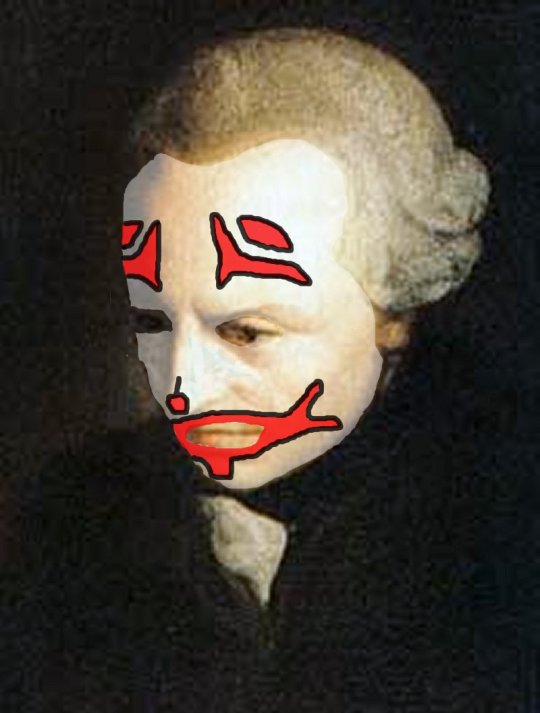
38 notes
·
View notes
Photo

A critique of pure fashion?
Kant dresses only according to that maxim whereby he can at the same time will that it become a universal law.
He's made one miscalculation, though. The lace cravat and puffy sleeves, while co-ordinated, throw an otherwise dashing and well-fitting outfit into conceptual disarray. The frills clash with the otherwise clean lines of the jacket, and not in a relatively good accenting way. It's not categorically imperative to avoid those this season, but care of selection and pairing is a must.
17 notes
·
View notes
Photo
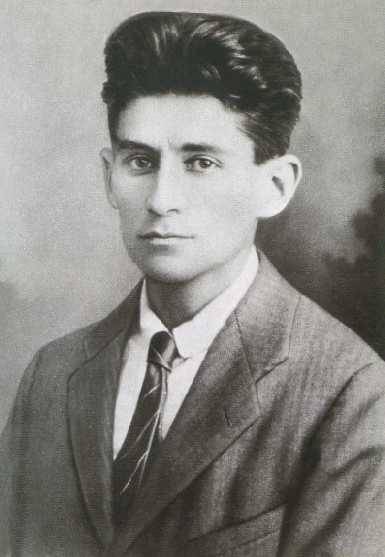
That is so Kafkaesque.
In this photo, taken after Franz Kafka awakened from unsettling dreams to find himself transformed into a fashionable badass, Kafka pioneers the skinny necktie. It combines with the pompadour haircut to metamorphose his appearance into one that gives a sense of effort and care for one's appearance without an excess of trial. With the suit, it's a versatile fashion choice fit for events ranging from a country wedding or a soiree at the local castle, though the fit on Kafka's left side seems a bit off.
As is the case with much bespoke fashion, Kafka must have waited forever for those pieces to be made.
#fashion#franz kafka#kafka#literature#metamorphosis#philosophy#pompadour#rockabilly#skinny tie#suit#kafkaesque
11 notes
·
View notes
Photo

God may be dead, but the cravat is clearly not.
Here Nietzsche's fashion choices explore his notions of nobility and morality. Aside from the tri-tone ensemble reflecting the moral black, white and shades of grey (particularly a well-composed mid-grey in the overcoat), Nietzsche wears the cravat and moustache with noble bearing associated with ethical mastery, as per "On the Genealogy of Morals". He cares not for your ressentiment.
#cravat#fashion#friedrich nietzsche#morality#nietzsche#philosophy#ressentiment#suit#existentialism#nihilism#ethics
12 notes
·
View notes
Photo
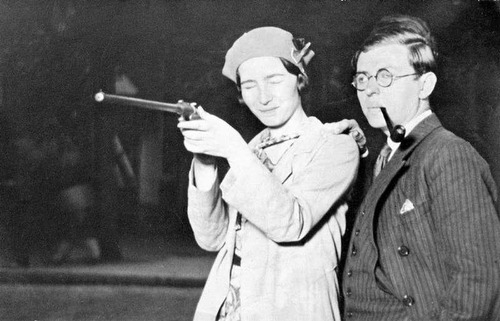
The author of the Second Sex accessorizes without need for a second thought.
While Sartre looks on in a somewhat ostentatious double-breasted three-piece suit, de Beauvoir challenges patriarchal power while re-inscribing herself in problematic gender norms through the manner in which she is handling her phallic weapon.
She is also wearing a spiffy hat. Look for something like it in nearby vintage shops or Team Fortress 2.
#de beauvoir#existentialism#fashion#hat#jean-paul sartre#philosophy#pistol#sartre#simone de beauvoir#suit#feminism
2 notes
·
View notes
Photo

Albert Camus is no stranger to the popped collar.
It's not the only photo that I've found of him sporting an upturned collar, which is a gesture of defiance toward an uncaring universe into which he was thrown without any say in the matter.
31 notes
·
View notes